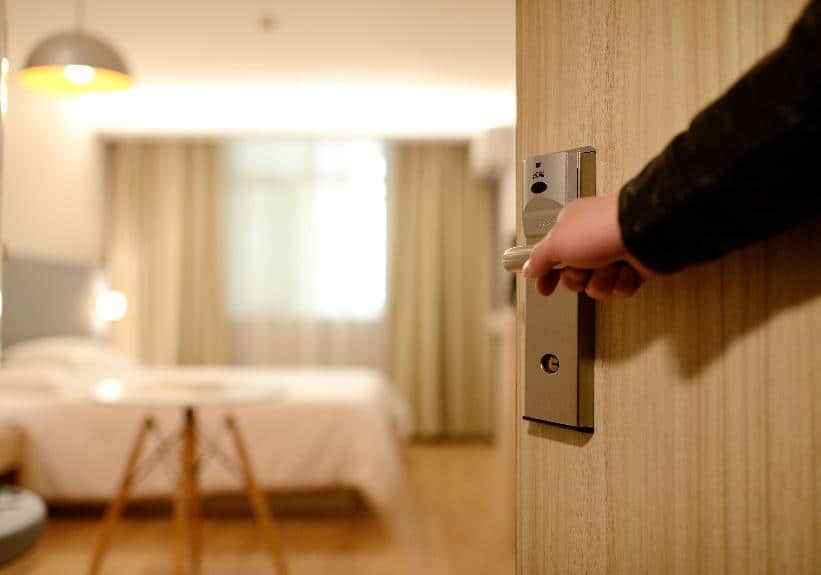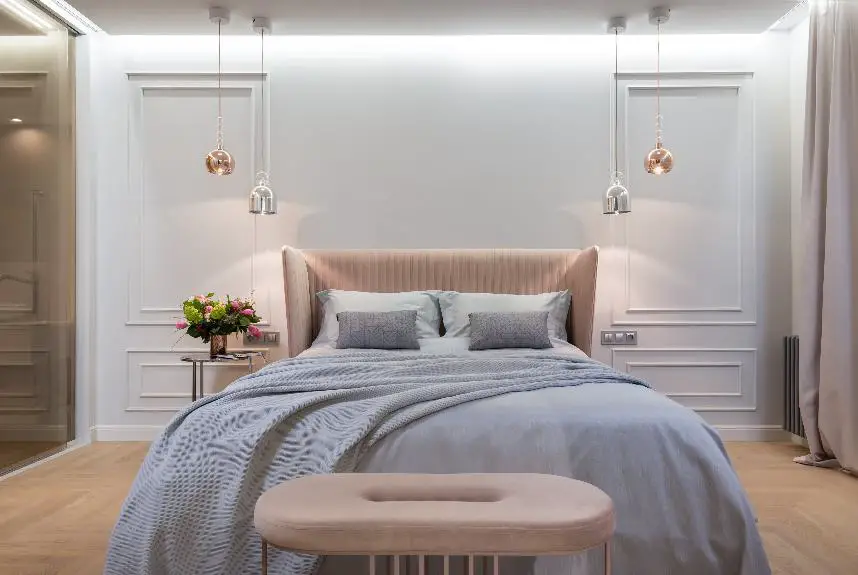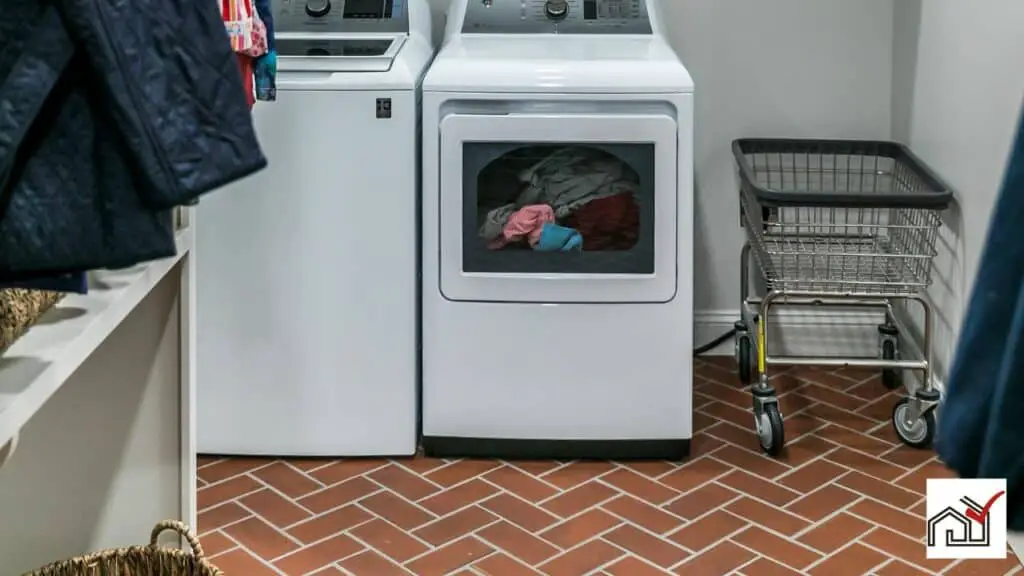If your bedroom door won't latch, there are a few steps you can take to troubleshoot and fix the issue.
First, check the door and frame alignment for any gaps or misalignment. If there are any noticeable gaps, try adjusting the hinges to see if that helps. Tighten any loose hinge screws that may be causing the door to sag or misalign.
Next, examine the strike plate on the door frame. Make sure it is properly aligned with the latch on the door. If needed, adjust the position of the strike plate so it aligns with the latch.
Additionally, inspect the latch itself for any obstructions or signs of wear that could be causing the issue. If there is debris or damage preventing the latch from properly engaging with the strike plate, clean or repair as necessary.
If you have tried these steps and the problem continues, it may be best to consult a professional. They can assess the situation and provide further guidance or assistance in resolving the issue.
Diagnose the Latch Issue
To diagnose a latch issue, perform the lipstick test to check the alignment of the latch and strike plate. Apply lipstick to the latch edge, close the door, and reopen it to see where the lipstick has transferred onto the strike plate. Misalignment is indicated if the lipstick mark does not line up with the hole in the strike plate.
If misalignment is found, examine the strike plate and door frame for wear or damage. If the strike plate is bent, remove and straighten it with a mallet. This may align the strike plate with the latch.
If the strike plate is not bent and the latch does not engage, consider enlarging the strike plate hole with a metal file or electric planer. Do this carefully to avoid damaging the door frame and compromising security.
Proper diagnosis is essential for a durable repair. Adjusting how the latch and strike plate interact ensures the door latches correctly.
Tighten Door Hinges
To fix misaligned door hinges, first check for loose screws. Tighten any that you find using a screwdriver, ensuring they're flush against the door and frame.
Focus on the top hinge as it supports most of the door's weight. If the door still sags, replace the existing screws with longer ones to better anchor the hinge to the frame. Do this one screw at a time to maintain hinge stability.
Use a longer screw in the top hinge to lift a sagging door or in the bottom hinge to lower it. Tighten all screws securely for proper door alignment and latch function.
Adjust the Strike Plate
To fix a door latch that doesn't catch, adjust the strike plate.
First, remove the strike plate by unscrewing it.
If the latch almost fits, file the hole in the strike plate for more room.
For bigger alignment issues, move the strike plate.
Mark where the latch hits the jamb and enlarge the mortise with a chisel if needed.
Fill any old screw holes with wood filler.
Screw the strike plate back in, drilling new holes if necessary.
Test the door to ensure it latches.
Perform the Lipstick Test
To check the alignment of a door latch and strike plate, you can use the lipstick test. Apply lipstick to the door latch. Any color is fine.
Then, affix a piece of masking tape to the strike plate. Close the door to transfer the lipstick from the latch to the tape, revealing where the latch contacts the strike plate.
Open the door to see the lipstick mark on the tape, showing the latch's position relative to the strike plate hole. If the mark is misaligned, the strike plate needs adjusting.
You may need to reposition the strike plate or enlarge the hole. This test helps identify and fix door latch issues accurately.
File the Strike Plate Hole
If the latch is not aligning with the strike plate, as indicated by a lipstick test, you may enlarge the hole in the strike plate to correct the issue. Start by unscrewing and removing the strike plate from the door jamb to access the hole. Assess how much you need to file down to align the latch and strike plate properly.
Use a half-round file to enlarge the hole, filing carefully to maintain its shape and checking regularly to prevent over-filing. Remove any sharp edges that arise during filing to ensure smooth operation.
Once you have filed the hole, reattach the strike plate and test the door. If misalignment persists, adjust the mortise or reposition the strike plate as needed for the door to latch correctly.
This process can resolve issues with an interior door that will not latch due to strike plate misalignment.
Sand the Door Edge
To fix a bedroom door that does not align with the strike plate and has trouble latching, you may need to sand the door edge. Warping or shifting of fittings over time can cause a door to stick. To resolve this issue, sanding the door edge can help the door close smoothly and latch properly.
To identify where to sand, apply masking tape to the door jamb where the door sticks. Close the door to mark the sticky area on the tape. This is the area you need to sand.
Sand the marked area on the door edge. Use sandpaper for small adjustments and an electric planer for larger ones. When using a planer, remove thin layers to prevent taking off too much material. Sand in the direction of the wood grain for a smooth finish.
If the door continues to stick, use a chisel to deepen the strike plate recess in the wall framing slightly. Do this incrementally to ensure the door latches without removing too much material.
Once you finish sanding or chiseling, repaint or reseal the door edge for protection. Test the door frequently to avoid over-adjusting and ensure a proper latch.
Consult a Professional
If DIY methods do not fix your bedroom door latch, consider hiring a professional door repair technician. Fixing a door yourself can be challenging, particularly if basic fixes like adjusting hinges or sanding the door edge are ineffective. A skilled technician will examine the door's alignment and hinges. They might remove the strike plate to check for misalignment or mismatch with the latch. Adjustments may include repositioning the strike plate or enlarging the mortise. Professionals use precise tools and have experience to avoid additional damage.
Hiring a professional ensures the door works correctly, saving time and possibly money. Repair costs usually range from $100 to $300, which is often less than replacing the entire door. A professional can also detect structural problems that may have caused the issue.
A professional repair allows the door to be used normally and resolves the latching problem, ensuring security and privacy.





